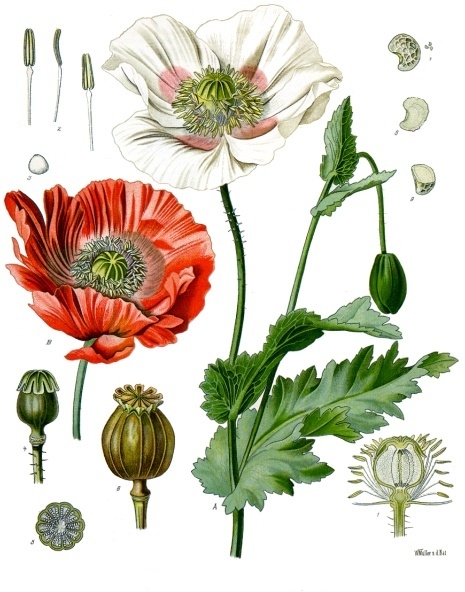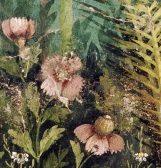
The opium poppy is a herbaceous annual native to Greece and western Asia and is a member of the poppy family, Papaverceae, that also includes bleeding heart and corydalis. It is the oldest poppy in cultivation, dating back to ancient Sumerian times, 4000 BC, and was used by ancient Minoans (2000-1400 BC) to make opium from its seed capsules. In the 5th century BC, Hippocrates, the Greek “father of medicine”, noted its medicinal benefits and in the centuries that followed both ancient Greeks and Romans valued the opium poppy for such uses as reducing pain, inducing sleep, relieving bowl problems, treating various diseases, and protecting the user from poisons. The ancient Roman naturalist, Pliny the Elder, (d. 79 AD) mentions 3 kinds of opium poppy, describes how to collect and test the latex for purity, and includes suicide when enumerating the various uses of opium. A wall panting in the House of the Golden Bracelet includes a picture of the opium poppy. Photo Credit Franz Eugen Köhler Wikipedia

Description: Growing up to 3′ tall, the plant has blue-gray lobed leaves that clasp the unbranched blue-green stem. Both stems and leaves are glaucous and have a light distribution of coarse hairs. In spring, nodding buds open to 4″ wide flowers with 4 petals, and sometimes with dark markings on the base. The species is scarlet but breeding has created white, pink, and purple cultivars. The flowers may be one of two forms: carnation-flowered with fringed petals, or peony-flowered that look like double peonies. Plants readily self-seed. The petals drop quickly when cut but the round seed capsules are very attractive and dry well. All parts of the plant exude white latex when cut. Today, opium poppy is grown as an ornamental and a source of opium; the seeds are used in cooking. Photo Credit Wikipedia
Type: Annual
Bloom Color: White, pink, red, or purple
Bloom Time: Spring
Size: 2-3’ H x 2’
Light: Full sun
Soil: Fertile, moderately moist, well-drained
Hardiness: NA/ Annual